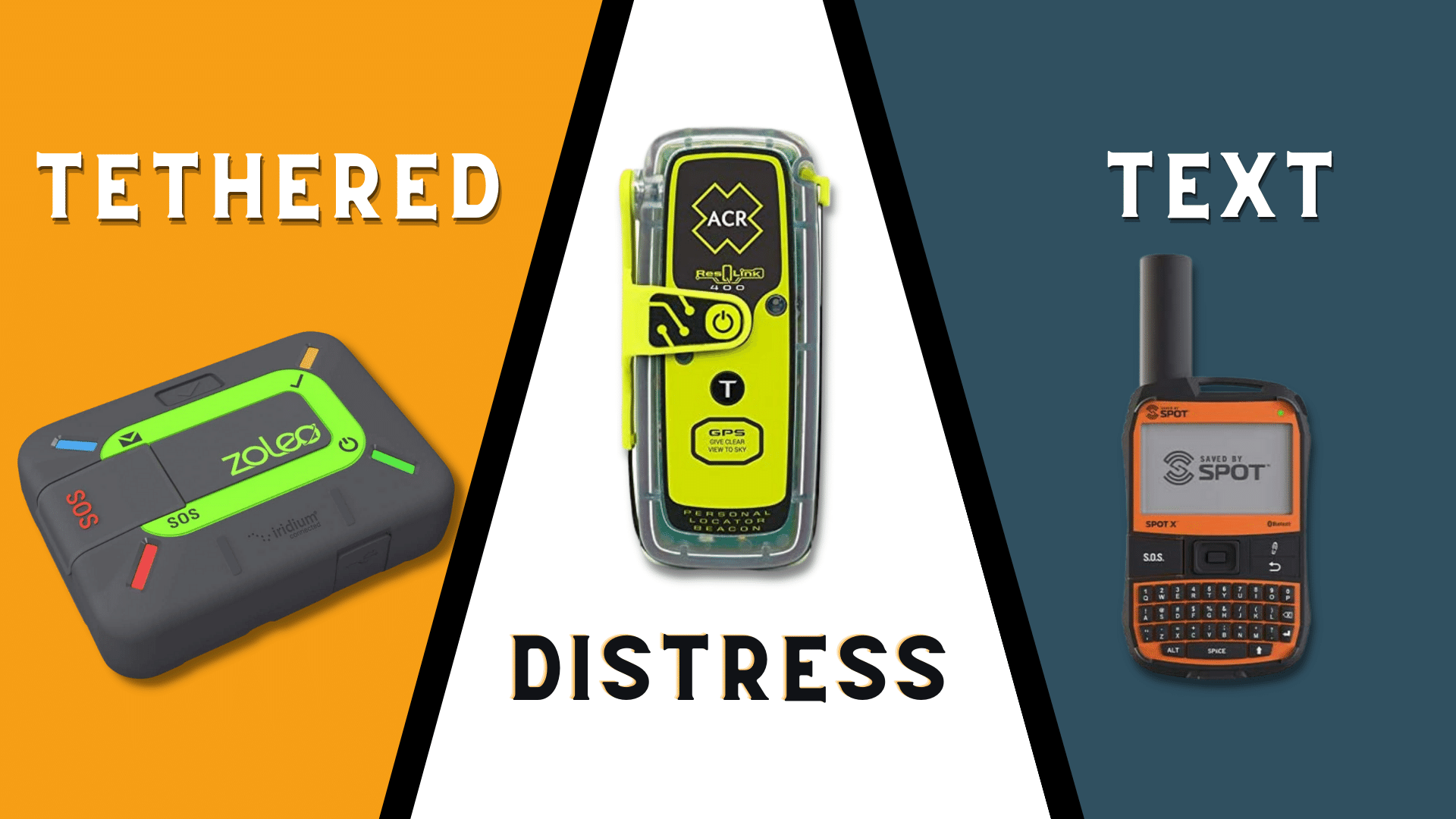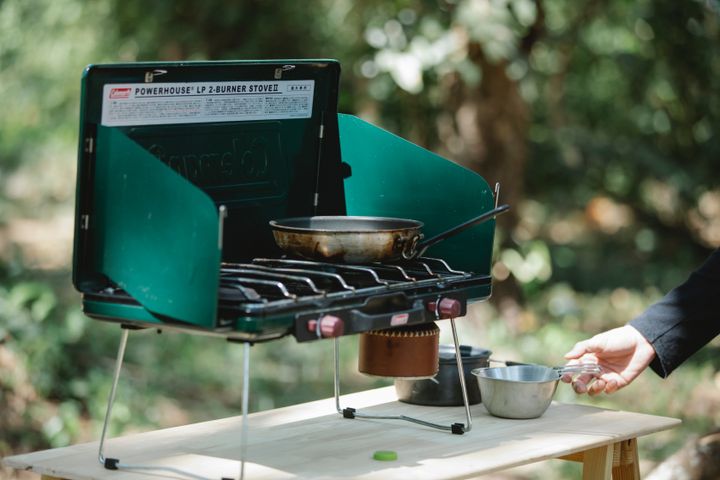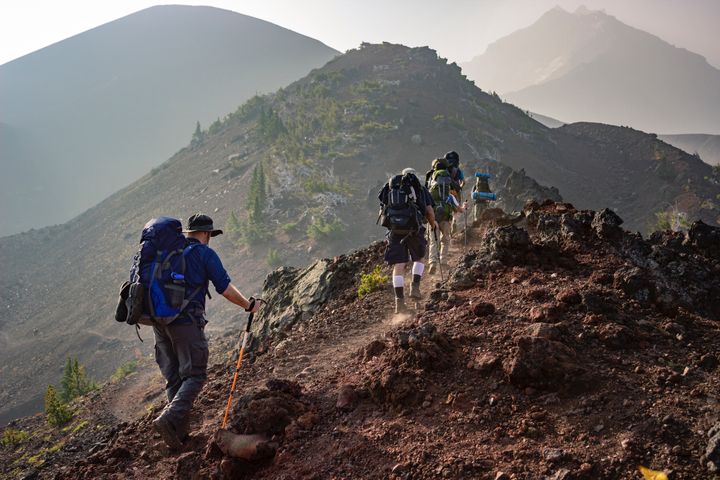Stranded? PLBs And Emergency Communication
If you're stuck on a mountain, who CAN you call? Take a look at personal locator beacons, PLBs


Are you ready for the unexpected in the middle of nowhere? Get the peace of mind you need with a satellite-enabled personal locator beacon whether backpacking or camping!
Don't let yourself be stranded in a remote area without help. Personal locator beacons are designed to work in the most remote areas with only a push of a button. With almost no training, you can be prepared for any situation and get the help you need when you need it most.
Be prepared for any situation and get the help you need when you need it most. With a personal locator beacon, you can have peace of mind knowing that if something happens, help is just a push of a button away.
Take control of your safety and get the information you need to get the right personal locator beacon for you today!
Personal Locator Beacons
Personal Locator Beacons (PLBs) are satellite-enabled devices that provide peace of mind in emergency situations where there is no cell coverage. PLBs are designed to be used in remote areas and can be activated to send a distress signal to a satellite network, which then alerts the relevant authorities. This allows for quick response times and can save lives in extreme situations.
There are three different options for satellite coverage with different uses. The public use/maintained network is the Cospas/Sarsat system that search and rescue (SAR) teams use worldwide when locating people. This satellite system has global coverage; however, its use is restricted to public use and will only allow the transmission of a distress signal, not messaging or “OK” messages. “OK” messages are sent to people back home to ensure everyone know the traveling party is ok. It is an added comfort message.
The two private satellite systems, which require subscriptions, are the Globalstar system and Iridium system of satellites. Globalstar does not have worldwide coverage where the Iridium system does. Both will accommodate messaging depending on the plan chosen for a particular device.
PLBs are becoming increasingly popular among adventurers, hikers, and travelers who want to ensure their safety while exploring the outdoors. The two most common uses of a PLB are to communicate an emergency when in the wilderness and to automatically activate an emergency beacon if the unit's battery dies.
PLBs are also used by some climbers to automatically inform search and rescue teams of their location if a climber becomes incapacitated or loses consciousness. A PLB can be found in almost all survival kits, including the "Red Cross Emergency Preparedness" book.
Personal Beacon Only
These PLBs only send out a distress beacon when there is an emergency situation. They often cost more than the fully featured devices, but there is no monthly plan since they typically use the Cospas/Sarsat system which is public and free.
Tethered Messaging PLB
A tethered device is one that basically acts as a “cell tower” when used in conjunction with a cell phone. It provides the signal to the cell which uses a proprietary app to communicate, get weather reports and send “OK” messages. They also have an emergency button that sends the message to the correct agencies with GPS information as well.
Standalone Messaging PLB
These units are able to communicate via text messaging with the sole use of the device and have built-in keyboards for doing so. Beyond that, they also have an emergency button.
What we like
The ACR ResQLink 400 is our choice for a personal locator beacon alone. This powerful beacon is programmed with a unique HEX ID that can be used to identify the beacon owner and provide vital information to Search and Rescue teams in case of an emergency. With its lightweight design, it's easy to carry and use.
With its advanced satellite technology, you can rest assured that your distress signal will be heard loud and clear. It uses the Iridium system of satellites give you global coverage wherever you are. You will need to register the device in whichever country you intend to use it in so the authorities are ready to respond to you specifically.
This unit is simple, waterproof and uses the system that is directly tied to public resources set up to search and rescue. Another added benefit of using the public system is that a beacon an aeronautical distress signal as well. Worldwide Over 48,000 people have been rescued since 1982 thanks to this technology. The drawback is there is no functionality for the “I’m OK” message to home.
More details
- No Subscription Required
- Search and Rescue (SAR) satellites forward distress signal down to earth Ground Stations
- Ground stations forward the distress to the Mission Control Centers (MCC)
- The MCC alerts the closest Rescue Coordination Centers (RCC)
- The RCC call emergency contacts and dispatch the closest SAR teams SAR teams arrive on scene and rescue survivors
- 406 MHz Emergency Distress Signal / Homing signal
- LED Strobe and Infrared Strobe
- Global Coverage / Cospas-Sarsat / MEOSARGPS and Galileo GNSS
What we like
The ZOLEO Satellite Communicator is our pick for the best tethered two-way communication platform. With ZOLEO's satellite-based communication device, you can stay in touch with family and friends even when you're out of cell coverage. Get unlimited check-in, SOS, cell and Wi-Fi messages for just $20/mo. You can suspend your plan for just $4/mo after the initial 3-month commitment since you may have a season of down time.
When communication is needed, ZOLEO uses the most cost-effective network available whether it is cellular, satellite or wi-fi. You get your own assigned SMS number and email address to receive messages from your contacts through the use of the Iridium satellite system.
With its 24/7 emergency monitoring service, you can rest assured that help is just a button away. Plus, you can easily share your location with family and friends with Location Share+ for just $6/mo. With its long-lasting battery life (200 hours), lightweight design (150 g), and superior dust- and water-resistance (IP68), you can stay connected to those most important to you.
You can customize how often it checks for new messages and sends updates to extend battery life. You can include your location coordinates when sending messages for added safety. The drawback to this unit is that it requires two different devices with batteries to operate at its full potential, not to mention upgraded plans.
More details
- Dedicated ZOLEO SMS number and email to share with contacts.
- Check-In button.
- Power button.
- SOS alerting button with 24//7 monitoring S05 and response.
- Long-lasting rechargeable battery.
- Compact and lightweight.
- Dust, shock-and I water-resistant.
- Mini-USB port.
- Iridium® connected for global coverage (no gaps)
What we like
The Spot X 2-Way Satellite is our pick for the best messenger as a standalone unit. The benefit of this unit is that you get the features of the others with the added benefit of being able to only have to maintain one battery. It has a sleek and rugged design even while it reminds us of a Blackberry cell phone while its Geofence Targeting triggers alerts or will mark map zones.
With its SOS feature, push the button and get help from local SAR teams in case of an emergency. Friends and family are able to communicate through text with its number provided upon subscription along with an email address. It can be tethered to a cell phone and used for voice calls too. It operates on the Globalstar system of satellites so do check coverage for where you are traveling. It does have wide coverage, just not global.
More details
- SpotX Device
- Strap and carabiner
- Micro usb data/power cable
- Quick start guide
- SOS mirrored sticker
- Warranty card
- Kickstand
Buyer’s Guide and FAQs for Personal Locator Beacons/ Communicators
Are personal locator beacons worth it?
Is a Personal Locator Beacon Worth It? A personal locator beacon can help save your life in certain situations. We highly recommend one of these devices if you'll be off-roading, hiking, camping, or boondocking away from amenities and cell service.Individually owned personal locator beacons are an excellent investment if you plan to take part in outdoor activities such as off-roading, camping, or hiking in remote areas far from any amenities or cell service. As they could potentially save your life in an emergency situation, we strongly recommend investing in one of these products.
What does a personal locator beacon do?
A personal locator beacon (PLB) is a device that can emit an S.O.S alert via the COSPAS-SARSAT global satellite system on the 406MHz frequency, which is dedicated to distress calls. Comparing it to a phone service, PLB signals are like making a 911 call without having any phone service.
Can you use your phone as a personal locator beacon?
It is not possible to use your phone as a personal emergency beacon due to its lack of ability to connect with satellites. Any emergency response apps available require an active cellular internet connection in order to provide you with assistance.
When should you use a PLB?
In a life-threatening situation without other available forms of help, the use of cell phones, satellite phones, two-way radios or sending a group can provide additional information to rescuers. A PLB should be used only as a last resort.
What should I look for in a PLB?
When investing in an EPIRB, you need to consider the size and how it can be stored/carried. Some come with integrated GPS, shortening the period of time required before alerting the rescue service. The battery life of the device should also be taken into account, as it will determine how long it can send out a signal after activation. Additionally, make sure that the operational temperature range suits your needs.
What is the difference between PLB and personal AIS?
MOB beacons and PLBs serve different purposes in a "Man Overboard" scenario. Primarily, AIS beacons are designed for MOB rescue whilst PLBs signal the emergency services for life-or-death situations. The best chance of being rescued is usually from the vessel so it's important to consider that first.
What is the difference between PLB and satellite phone?
PLBs and Satellite Messengers are both used for tracking purposes, however they differ in their functioning. While a PLB only has a rescue function and transmits data to government-run satellites, a Satellite Messenger utilizes a private network and offers more features such as check-ins and; SOS buttons. Additionally, one can link their progress to an online page using the latter device.
What is the difference between PLB and EPIRB?
The main contrast between EPIRBs and PLBs is that EPIRBs are registered to a boat and need to be installed on it, whereas PLBs are meant for personal use and can be worn with a Personal Flotation Device (PFD) or put in a pocket or an emergency bag.
Final Thoughts on PLBs and Emergency Communication
So there you have it! Our thoughts about personal locator beacons along with some suggestions to get you going the right direction. Whether you are backpacking or on a remote trail with your adventure motorcycle or walking in the woods, having a plan for potential emergency situations is always a great idea.
The most important part of any camping trip is not the gear, it really is the people with whom you spend time. Whether it is family or friends, our goal is to minimize the distractions of either not having the right gear, or the gear malfunctioning so you can focus on what's most important.
If this article was helpful, consider becoming Outdoor Verified by subscribing so you won't miss any updates on camping and outdoor gear recommendations. We even send out sale items when we find them to subscribers!
~Ron








Comments ()